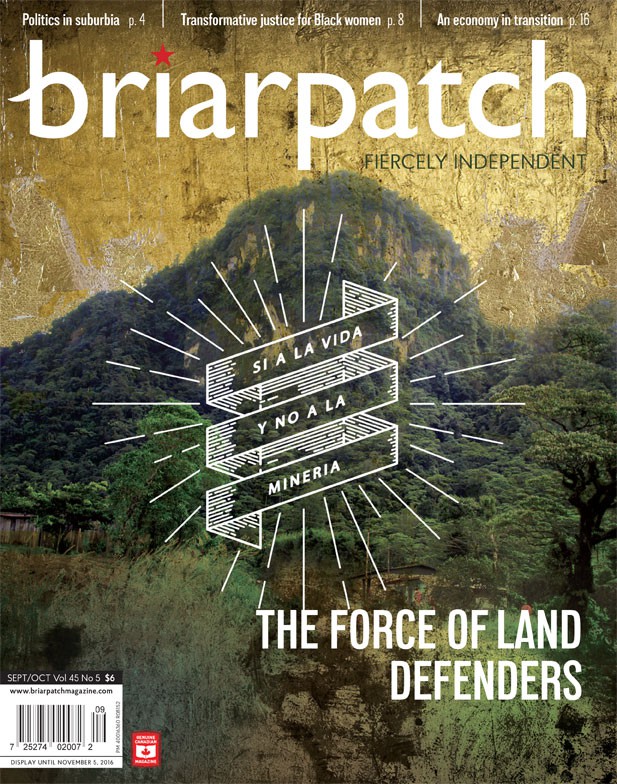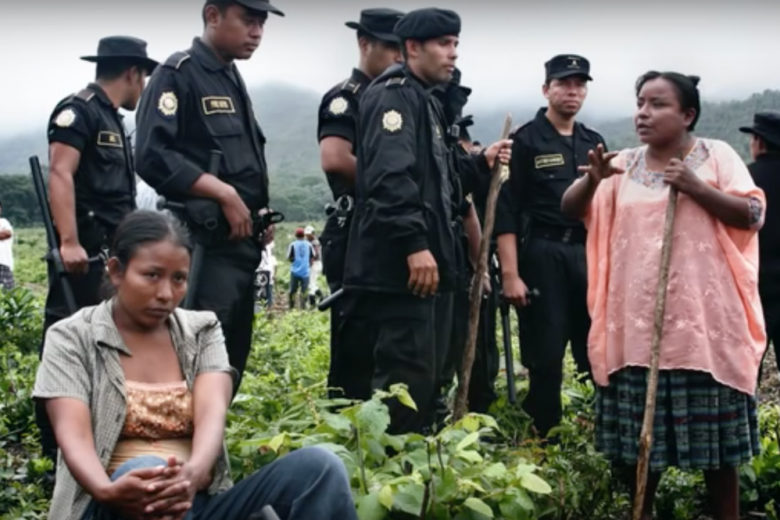
In Briarpatch’s home province of Saskatchewan, Husky Energy recently spilled about 250,000 litres of crude oil and chemicals into the North Saskatchewan River, contaminating the water supply of the cities of Prince Albert, North Battleford, and points in between and beyond.
The North Saskatchewan is no driblet: it’s a formidable 1,287 kilometres long, the source of drinking water for hundreds of thousands of people, and Indigenous hunting and fishing territory. The river was once a major trade route for the fur industry led by the Hudson’s Bay Company, and, to this day, the North Saskatchewan River remains a hostage of capitalist expansion.
Emily Eaton, an expert researcher of oil and gas in Saskatchewan, explained on her site SaskOil (republished on the Briarpatch blog) that the “Ministry of Economy’s website indicates that there have been over 18,000 spills in Saskatchewan since 1990. A 10-year snapshot reveals over 8,360 spills since 2006, of which Husky is responsible for 1,463 (or 17.5 per cent).” While many of these spills are relatively small in scale and not in close proximity to the water supplying human communities, the devastating reality is that it is often dollar figures – not human and environmental vitality – that determine the level of monitoring of the extractive industry.
A Globe and Mail report on the Husky pipeline spill quotes an analyst at Calgary-based investment firm FirstEnergy Capital: “It’s another incident that anti-pipeline types and environmentalists … will latch on to say this stuff is dangerous.” Well, yes.
The capitalist extractive industrial logic sees water and land as collateral. In social justice logic, water and land are life.
It’s not just in Saskatchewan that the insatiable extractive compulsion is wreaking havoc. The imperialist thrust of Canada’s mining industry has made its way to every country in Latin America.
As Lori Hanson points out in her article, “Of Miners and Land Defenders,” Canada is a hub for mining corporations that have operations around the world. “As of 2014, about 80 per cent of the world’s mining companies were headquartered in Canada, and the Toronto Stock Exchange raised $969 million in equity capital for Latin American mining projects in 2013,” she writes.
Why is Canada so attractive to the extractive industry? One reason is that Canada itself is built on a foundation of resource extraction on Indigenous lands. Another reason, as Hanson notes, is that the legislative climate is friendly to Canadian extractive industries operating domestically and abroad.
One example of the amiable climate is the negotiation of the Trans-Pacific Partnership (TPP) – a trade agreement (not yet ratified) between 12 countries that can reduce tariffs for extractive companies and improve their profit margins. Negotiated under Stephen Harper, the TPP is an enticing prospect for Canadian mining companies.
The Mining Association of Canada’s “Facts and Figures” report of 2015 celebrates the negotiation of the TPP: “As one of Canada’s largest outward investing sectors, the mining sector will benefit from the greater certainty, transparency and foreign investment protection that the TPP offers. Participating in the TPP is important because it will enable the mining industry to remain competitive on the global stage.” The TPP’s negotiation, not to mention its potential ratification, legitimizes a regime of extraction despite vocal and militant opposition from communities displaced and contaminated by that industry.
The light on this landscape sits with (in the language of the investment analyst) “anti-pipeline ‘types,’” environmentalists, and Indigenous communities the world over who defend the land. Defenders of the land like the guardianes described in “Of Miners and Land Defenders,” (p. 22) and those on Treaty 6 who organize on the banks of and sing songs to the North Saskatchewan River collectively challenge the logic of capitalism to expand and extract.
Many of the most powerful forces for change are folks who organize around kitchen tables and in daily struggle. As Aziz Choudry argues in “The Intellectual Labour of Social Movements” (p. 16), it is the work and knowledge of ordinary people that often forms the backbone of movements. While resistance closest to the ground, like that of the guardianes, constitutes a critical mass that has the potential to destabilize capital-driven efforts like the scramble for social licence to operate (SLO), too often that critical mass is threatened by fractious and dispersed politics.
For now, it appears that there will be little to no corporate atonement for the assault on water and land. The defenders who know the land, value it, cherish it, love it, and understand it in all of its complexity deserve the full extent of our collective support.






